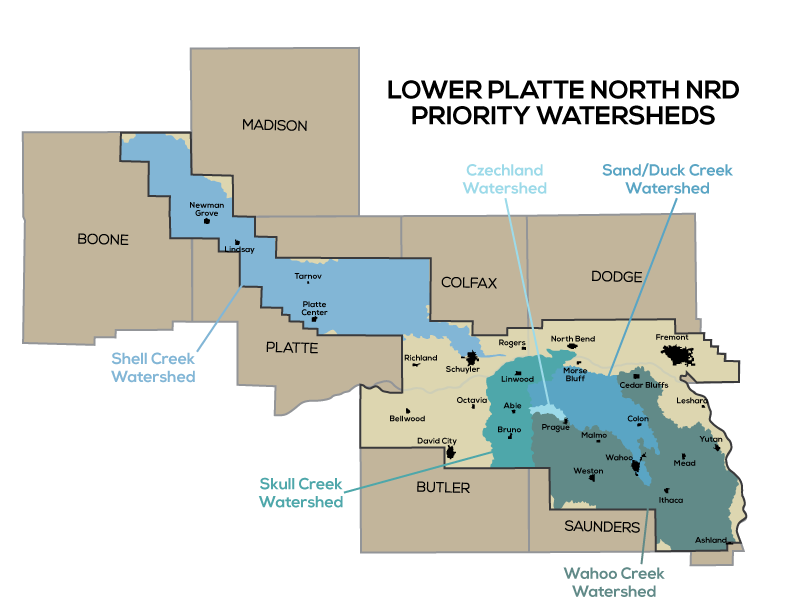The Lower Platte North NRD provides higher cost-share rates for soil and water conservation work in priority watersheds.
The cost-share rate can be up to 75% in these watersheds. Current priority watersheds are:
- Skull Creek
- Shell Creek
- Czechland Lake*
- Sand & Duck Creeks*
- Wahoo Creek*
- Bone Creek
Cost-share rates may vary depending on where you live within these watersheds.

*These watersheds are considered high priority because they contain completed projects where soil erosion may be a concern, such as Czechland Lake in the Cottonwood Creek Watershed or Lake Wanahoo in the Sand/Duck Creek Watershed.
Do you qualify for increased land treatment funding?
To see if your land is in one of the priority watersheds, contact your local Natural Resources Conservation Service office or Sean Elliott at the NRD.
Working for Water Quality: Wahoo Creek
More financial and technical help for conservation work has been available for landowners in the Wahoo Creek watershed, thanks to the completion of a comprehensive water quality management plan. This plan was completed in partnership with the Environmental Protection Agency and the Nebraska Department of Environment and Energy.
The 517-square-mile Wahoo Creek watershed, which includes the majority of land in Saunders County, was listed as “impaired” by the Nebraska Department of Environment and Energy in 2007 due to E. coli and other pollutants. The Wahoo Creek Watershed Water Quality Management Plan was developed to address those issues.
The Lower Platte North NRD initially led a two-year effort to develop a water quality management plan in partnership with the Environmental Protection Agency and the Nebraska Department of Environment and Energy.
The plan targets major reductions in several pollutants in the watershed, including E. coli (76% reduction), nitrogen (26% reduction), phosphorus (50% reduction), and sediment (67% reduction). To achieve those goals, the plan calls for a mixture of Best Management Practices (BMPs) and education and outreach efforts.
The plan was completed in late 2013, and an update is scheduled in 2018.
With the completion of the plan, the watershed is eligible for Section 319 funding to help implement a variety of Best Management Practices (BMPs). Those BMPs could include buffer strips, no-till, terracing, small dams, rehab of existing conservation structures, and more.
